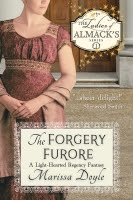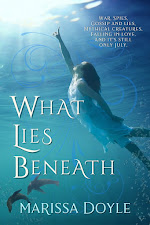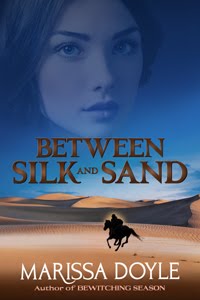When I decided I was going to create a Regency Society, part of that process was to learn about the dancing aspect of the period. I knew I couldn’t have an event without it. The problem was, I was starting from the perspective of an Austen fan, and the only basis of reference I had about the dancing were the various examples of it on the adaptations. It was all I had to go by. I didn’t know it had a name; I didn’t know anything about it. Google was my greatest ally.
I Googled “The dances of Pride and Prejudice” and found a site listing the names of the dances. I then Googled the steps for a particular dance and learned it was an “English Country Dance” (ECD for short) … and came up with a site that not only provided reference for the steps but also the music. That was the Country Dance and Song Society. I stumbled over a group list there and discovered, to my surprise, a whole network of groups all over the country. Wow. What’s even better; I found groups in Oregon, one fairly close to me.
So when I began to organize our first ball, I had a caller. And I learned then that callers came with music and steps and the whole ball of wax, even sheet music. What a boon!
I look at the dancing from our first event in August of 2007, and I marvel at how smoothly we danced. Here is a medley of the dancing at our first event. It looks like we’ve done it before. At least 70% of the people present at that Regency party had never danced ECD before. [Editor's Note: don't you just feel like you were there in the nineteenth century?]
What makes ECD so ‘user friendly’ is that it can be called like a square dance. Square dancing is often cobbled together by the caller as the music goes along — which is not the case with ECD. English country dances on the most part are matched to a particular piece of music. So if you say; “Let’s dance the Duke of Kent Waltz,” you will know not only what the music sounds like, but also the moves that go with it. You do them enough, and you don’t need callers. You know the dances by heart, as they did back in the 18th and 19th centuries.
English country dances come in various forms. There are duple minors (a set of four dancers; two couples), triple minors (a set of six; three couples), circle dances, and the quadrille, which is a bit harder, but these are definitely the dances that are most accurate to the Regency period. Quadrilles are also set dances, but they are often not matched to particular pieces of music. Many English country dances performed by our group are older than the Regency period. It would be like dancing disco at a party today… but since the mannerisms are elegant and they are similar to the period dance, we are happy to include them in our events. And they are also easy to learn.
We do mostly duple minors. It’s good to choose this format because new dancers can be paired with more experienced ones, and it’s a bit simpler than a triple or a quadrille.
In ECD there is a top to the room (usually where the music is). The way it worked back then was that the highest ranked couples took the top to begin, and the lower you were toward the bottom of the room, the lower you were in the social pecking order. In some of Jane’s books, she mentions ‘starting’ the dance. That is a great honor. If the party is in your honor, you start at the top.
 Duple minors are based on sets of four. Each ‘round’ of the music has a pre-determined set of movements that will occur within that set of four dancers. The ‘First Couple’ or ‘Ones’ are the couple closest to the top, and the ‘Second Couple’ or ‘Twos’ are the couple closest to the bottom. Gentlemen stand on the left side if you are looking toward the top of the room and ladies on the right. Sometimes during dances, these positions change, and when the ladies are on the left, that is known as being ‘improper.’
Duple minors are based on sets of four. Each ‘round’ of the music has a pre-determined set of movements that will occur within that set of four dancers. The ‘First Couple’ or ‘Ones’ are the couple closest to the top, and the ‘Second Couple’ or ‘Twos’ are the couple closest to the bottom. Gentlemen stand on the left side if you are looking toward the top of the room and ladies on the right. Sometimes during dances, these positions change, and when the ladies are on the left, that is known as being ‘improper.’Each time a cycle of the music completes, a new couple will end up on the bottom and the top of the line. The ones progress down the room, the twos progress upwards. When a twos couple reaches the top, they wait the dance out one round, and go back in as ones. When a ones couple reaches the bottom, they wait out the next round, and then join back in as twos. It seems confusing — but when you’re doing it, it makes sense.
 If there are an even number of couples in a line, then each round of music, the sets will either all be dancing, or one couple will be out at each end. If there are an odd number of couples, the one ‘out’ couple will appear at one end and then alternate to the other end on the next round. The trick is 1) to know when to join back in when you’re out, and 2) to remember what steps are required of you in your new role. A tip from me is to always angle yourself a bit downwards if you’re a one, and upwards if you are a two, that way, when the new couple appears in your set, you’ll always be facing them. Also, pay attention to what twos are doing if you’re a one, because chances are you’ll become a two soon enough.
If there are an even number of couples in a line, then each round of music, the sets will either all be dancing, or one couple will be out at each end. If there are an odd number of couples, the one ‘out’ couple will appear at one end and then alternate to the other end on the next round. The trick is 1) to know when to join back in when you’re out, and 2) to remember what steps are required of you in your new role. A tip from me is to always angle yourself a bit downwards if you’re a one, and upwards if you are a two, that way, when the new couple appears in your set, you’ll always be facing them. Also, pay attention to what twos are doing if you’re a one, because chances are you’ll become a two soon enough.Thanks, Stephanie, for that introduction. Come back on Friday, my friends, and Stephanie will walk us through the Duke of Kent’s Waltz. Formal attired recommended, but not required.





2 comments:
Thank you for all the dancing information. I learned a few dances at the Jane Austen Society AGM, but your detailed information helped my teach "The Hole in the Wall" at a Jane Austen tea party I held recently for my family. Here is the entry about my party.
http://fittoseejane-thelittlewhiteattic.blogspot.com/
Thanks again for all your great information and beautiful blogging.
Lovely party, and I said so on your blog. ;-)
Post a Comment